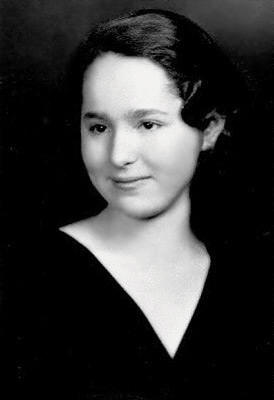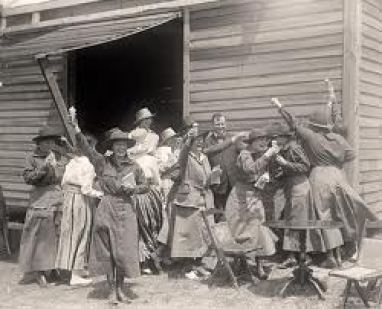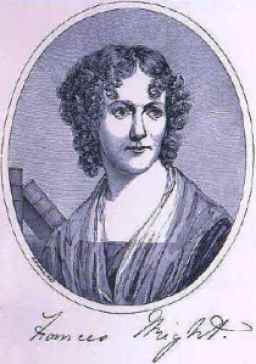
“Acyclovir turned out to be different from any other compound Elion had ever seen. It is so similar to a compound needed by the herpes virus for reproduction that the virus is fooled. The virus enters normal cells and starts to make an enzyme that helps it reproduce. This enzyme activates Acyclovir and turns into something that is toxic to the virus. In short, Acyclovir makes the virus commit suicide.”
This is a quote from Sharon Bertsch McGrayne’s excellent book Nobel Prize Women in Science, which explains not only how one of the many compounds developed by Gertrude Belle Elion works, but also exemplifies her approach to research. She wanted to understand how the compounds were metabolized in the body and how they fought disease. Together with Dr. George Hitchings and a team of researchers at Burroughs Wellcome, she developed drugs that would change the lives of many people for the better, reducing suffering and extending lives.
Gertrude Belle Elion was born in New York City on January 23, 1918 to a Jewish immigrant family. Her father, Robert Elion, immigrated to the US from Lithuania when he was 12 and worked hard to graduate from New York University School of Dentistry in 1914. He was very successful, opening several dental offices, and investing in stocks and real estate. Her mother, Bertha Cohen, immigrated alone at the age of 14 to come live with older sisters who were already established. Bertha was 19 when she and Robert married, and although she never pursued higher education, she was a voracious reader who frequently read the books her children brought home from school. She came from an intellectual Russian Jewish family that valued education and knew how important it would be to her children’s futures.
When Gertrude, Trudy to the family, was six years old her brother Herbert was born. Shortly afterward, the family moved to the Bronx where they had a happy childhood. Before the move another person joined the family, her grandfather from Russia. His failing eyesight prevented him from continuing his profession as watchmaker, so after Herbert was born, he spent a great deal of time with Trudy forming a close bond. He was a Biblical scholar and spoke several languages; together they spoke Yiddish, and shared time in the park, the Bronx zoo, and music.
Trudy’s father was also a music lover, specifically the opera. He and Trudy often went to the Metropolitan Opera, a habit that Trudy would maintain for the rest of her life, flying to New York on weekends from North Carolina. Robert influenced her in another way. He was always planning imaginary trips using maps, train and bus schedules. After Trudy became successful, she began to travel, visiting many places in the world before her death in 1999.
 Trudy was a successful student in high school, and when she graduated she entered Hunter College in 1933. She was a sponge for knowledge and enjoyed learning just about anything, but her decision to study science was made when she was 15 and watched her grandfather die painfully from stomach cancer. Trudy decided that no one should have to suffer as her grandfather had, so she wanted, if possible, to do something about it. Inspired as a girl by the life of Marie Curie and the book The Microbe Hunters by Paul DeKruif, she knew that she needed to study biology or chemistry, so she chose chemistry and graduated summa cum laude in 1937.
Trudy was a successful student in high school, and when she graduated she entered Hunter College in 1933. She was a sponge for knowledge and enjoyed learning just about anything, but her decision to study science was made when she was 15 and watched her grandfather die painfully from stomach cancer. Trudy decided that no one should have to suffer as her grandfather had, so she wanted, if possible, to do something about it. Inspired as a girl by the life of Marie Curie and the book The Microbe Hunters by Paul DeKruif, she knew that she needed to study biology or chemistry, so she chose chemistry and graduated summa cum laude in 1937.
Robert Elion had lost most of his wealth in the crash of 1929, and although he still had his dental practice and loyal customers, there wasn’t much money for college. Hunter College, the women’s section of City College of New York, was free for those who could beat the fierce competition, but graduate school was a different story. Hunter was also an all-girl’s school, and Trudy had never really faced discrimination because of her gender. She placed many applications for fellowships and assistantships, but nothing came through. It was the Depression and there weren’t many jobs available, but there were none for women in fields that were dominated by men. In one eye-opening interview, she was told that she was qualified, but that they had never had a woman in the lab and they thought she would be a distraction!
Trudy’s mother had always encouraged her to have a career of some type, so she finally enrolled in secretarial school, but when she got the opportunity to teach biochemistry at the New York Hospital School of Nursing, she dropped out and took the job, even though it only lasted for 3 months. Finally, she met a chemist at a party and asked him if she could work in his lab as an assistant. He agreed, but couldn’t pay her anything to start. She was willing because it allowed her to continue learning and after a year and a half, she was making $20 a week and had saved enough living at home for one year of graduate school.
In the fall of 1939, Trudy entered New York University with money for one year’s tuition. She worked part-time as a receptionist and took education classes that allowed her to substitute teach in the public schools. In 1941, Trudy completed her Master’s Degree in Chemistry and began the task of looking for the perfect job. Her focus was always to look for jobs that would allow her to learn and get closer to her goal of working in medical research.
When WWII began, the demand for women increased in laboratories across the country. Trudy got a job in a laboratory doing quality control work for the A&P grocery chain. Always concerned with learning new things, when she felt she had learned as much as she could, she applied to an employment agency for research jobs. For about six months, she worked for a Johnson & Johnson lab until it was disbanded. Having gained the experience she needed, she then had a number of jobs to choose from, but was most intrigued by a job as an assistant to George Hitchings working for Burroughs Wellcome.
She found out about the job when her father asked her what she knew about the company after they sent some sample painkillers to his dental office. She decided to call and ask if they had a research lab and a job opening. She and Hitchings were a good match. He explained that he didn’t like the traditional trial and error method of drug research. He was also content to let her learn at her own pace and move from one area to another to satisfy her thirst for knowledge. While she had moved on from other jobs because she felt she had learned all she could, she never moved on from Burroughs Wellcome (now GlaxoSmithKline.) There was always something new to learn and she had the freedom to do it there. But more importantly, they began to make a difference in people’s lives.
Although Trudy started as Dr. Hitchings assistant, within two years she was publishing her own papers under his guidance and by the mid 1960s she had developed a reputation apart from Hitchings. This was in spite of not having a Ph.D. For two years, she worked on a Ph.D. at Brooklyn Polytechnic Institute until the dean told her that she would have to quit her job and work full time on her degree. She wasn’t willing to quit her job, so she quit school. It was an agonizing choice to make, but she knew that she had the potential to make a difference where she was, so she stayed.
Her faith in the job paid off. In 1950, Elion synthesized two cancer treatments for leukemia. Both of these drugs are still used today and when combined with other drugs result in close to an 80% cure rate. One of these drugs, referred to as 6-MP, was found to suppress the immune system in rabbits. Reading about the rabbits, a British surgeon tried 6-MP in dogs with kidney transplants and found that it extended their lives. He contacted Elion and asked if they had similar compounds that he could try which might be more effective. One of these, later marketed as Imuran, proved to be very effective in suppressing the immune system and since 1962 has been given to most of the kidney transplant patients in the US.
But what Elion called her “final jewel” was Acyclovir. Prior to its unveiling in 1978, there hadn’t been much research done on viruses. It was assumed that any compound toxic enough to kill a virus would also be extremely toxic to normal cells. Because Acyclovir was so selective to the herpes virus, it was very nontoxic to normal cells. Not only was it a break through in treating herpes, but it was a break through in virus research, opening the doors to many new possibilities including treatments for AIDS.
The intervening years had brought life changes for Trudy as well. In 1941, she had been planning to get married to a brilliant young statistician named Leonard. He fell ill with a strep infection, bacterial endocarditis, and died, just a few years before penicillin became available. Her mother also died of cervical cancer in 1956. Both of these losses served to intensify Trudy’s drive to continue in her research.
In 1970, the company moved its research facility to the Research Triangle Park in North Carolina. For a life long NYC resident this was quite a change. She adjusted well however, and it was here that she received the call in 1988 from a reporter telling her she had received the Nobel Prize together with Dr. Hitchings, and Sir James W. Black. She had already retired in 1983, but had remained in a consulting position. Winning the prize gave her a visibility that she had not had along with opportunities to contribute in many other ways.
In spite of the accolades that eventually came her way, what always meant the most to Trudy were the letters and handshakes she got from people who wanted to tell her how her discoveries had changed their lives. Although she never met anyone that could take Leonard’s place and never married, she loved her work, opera, traveling, and had loving relationships with her brother and his family. Gertrude Belle Elion lived a full and rewarding life and died in her sleep at her home in North Carolina on February 21, 1999, with a folder full of letters from people whose lives she had touched and whose lives she had helped save.
Resources
Nobel Prize Women in Science by Sharon Bertsch McGrayne
Academy of Achievement – A Museum of Living History
First Woman elected to the national inventor’s hall of fame 1991 (New York Times)
Read about other Famous Women in Math and Science














































